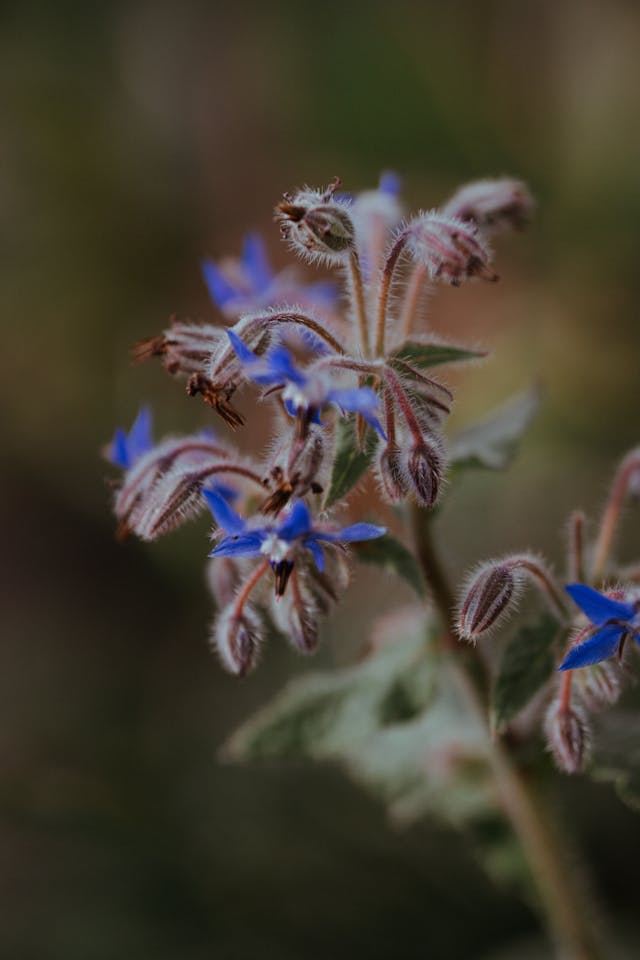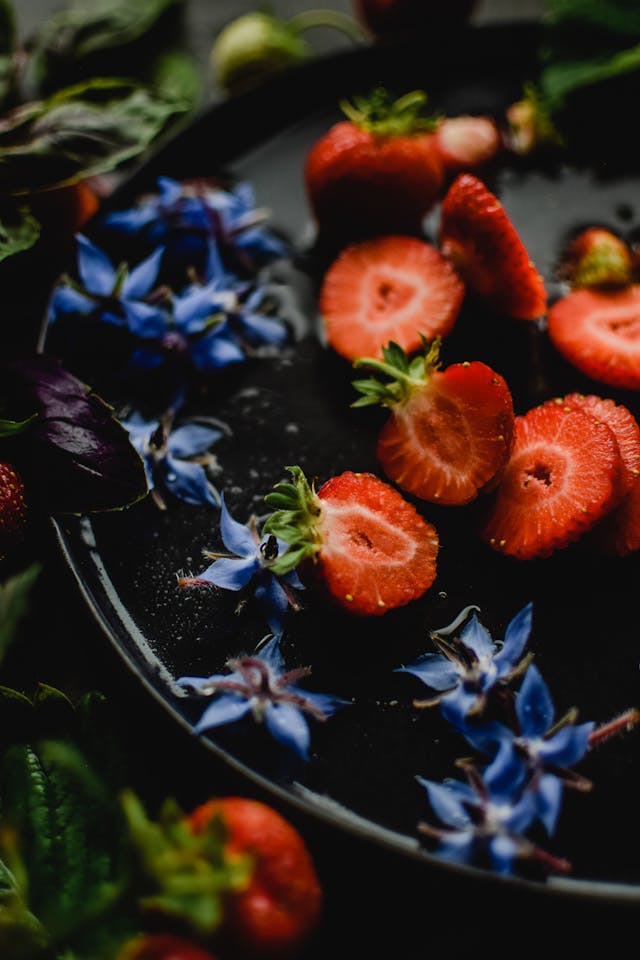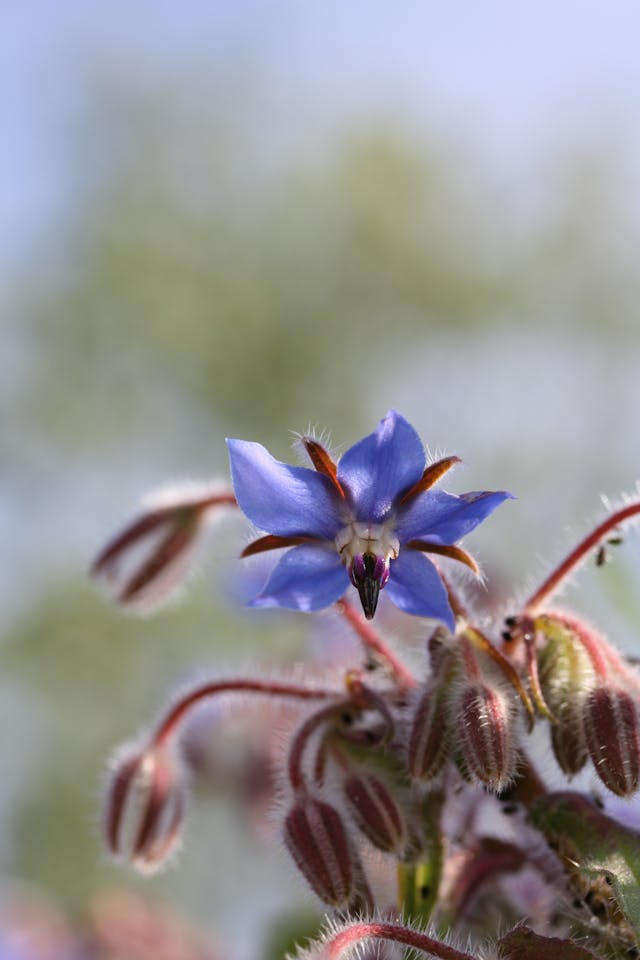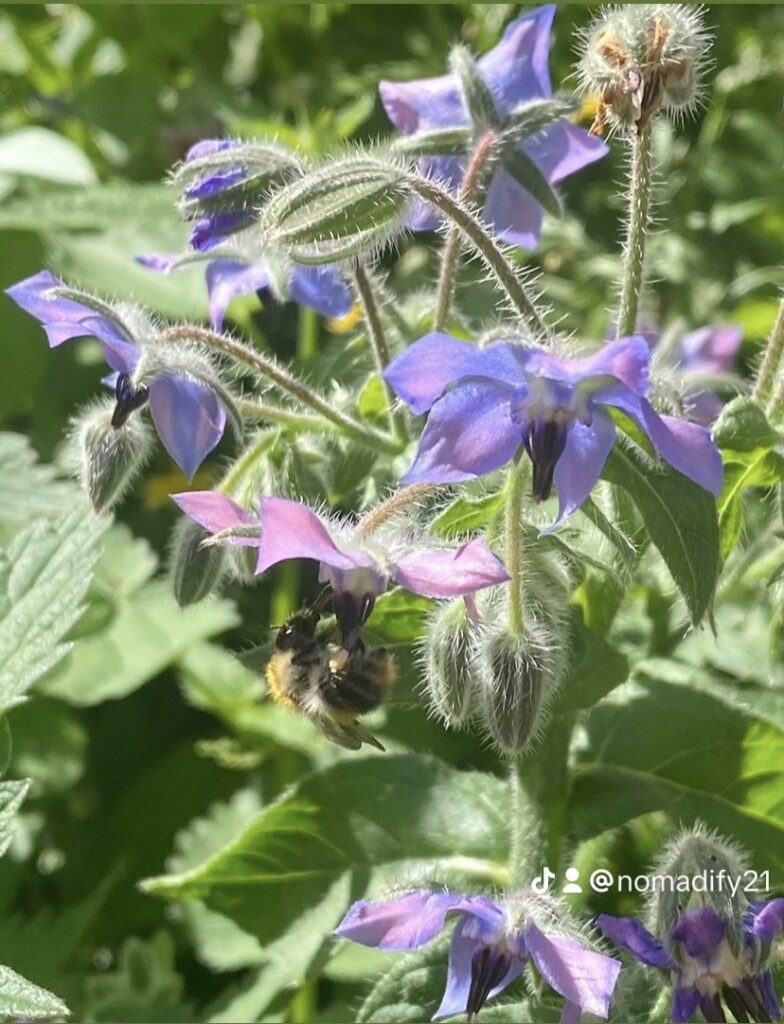Image by Johanna Banks
Borage, scientifically known as Borago officinalis, is a remarkable herb that can easily become a star in your healing herb garden. Known for its vibrant blue, star-shaped flowers, and lush, hairy leaves, borage is a visual delight and a powerhouse of health benefits. It’s incredibly easy to grow, making it a perfect addition for both novice and seasoned gardeners.
Growing borage is as simple as scattering its seeds in well-drained soil and ensuring it gets ample sunlight. This resilient herb can thrive in various climates and often grows wild in Mediterranean regions. Once established, borage will self-seed, providing a continuous supply of this beneficial plant. Its deep roots help to aerate the soil and bring up nutrients, making it a wonderful companion plant for tomatoes, strawberries, and many other garden favorites.

Borage has been used as a medicinal herb for centuries. In ancient Rome, it was believed to bring courage and comfort, often added to wine before battles. This tradition highlights its longstanding reputation as a mood enhancer. Modern science supports these claims, attributing its mental health benefits to the high levels of gamma-linolenic acid (GLA) found in its seeds. GLA is an essential fatty acid known for its anti-inflammatory and mood-stabilizing properties.
The leaves and flowers of borage are commonly used to make teas, tinctures, and infusions. These preparations are praised for their ability to support adrenal function, making borage a valuable herb for combating stress and fatigue. Borage tea is particularly noted for its diuretic properties, which can help to cleanse the kidneys and reduce water retention.

In addition to its mental health benefits, borage is packed with nutrients that promote physical well-being. It contains vitamins A and C, both powerful antioxidants that support the immune system and skin health. The herb also has notable amounts of calcium, iron, and potassium, which contribute to overall vitality.
Historically, borage has been used by various cultures. In medieval Europe, it was a staple in gardens for its culinary and medicinal properties. Today, herbalists and naturopaths continue to recommend borage for its broad spectrum of health benefits. Its leaves can be added to salads and soups, offering a mild, cucumber-like flavor that enhances the taste while boosting nutritional value.

One of the most fascinating aspects of borage is its ability to grow wild. It often appears in fields, gardens, and even urban areas without any need for human intervention. This hardy nature makes it accessible to anyone interested in herbal remedies, regardless of their gardening expertise.
In conclusion, borage is a versatile and beneficial herb that deserves a place in every healing herb garden. Its ease of growth, coupled with its rich history and wide-ranging health benefits, makes it a valuable addition to both your garden and your wellness routine. Whether you’re seeking physical vitality or mental clarity, borage offers a natural and effective solution, backed by centuries of use and modern scientific research.
If taking any prescription drugs or pregnant/breastfeeding please consult your medical practitioner before consuming any plant or herb or when using it as a holistic therapy in conjunction with our westernised traditional medicine.
As with any therapy, if you have any side effects stop using it immediately and consult your medical practitioner.
For more information join our newsletter or contact us at [email protected] with any questions or ideas.
Love Life x
References:
- Johnson, A. (2012). Borage: An Ethnopharmacological Perspective. Journal of Herbal Medicine, 3(2), 54-60.
- Smith, T., & Anderson, C. (2016). The Role of Gamma-Linolenic Acid in Health and Disease. Nutritional Neuroscience, 19(3), 123-132.
- Green, L. (2015). Herbal Diuretics and Kidney Health. Journal of Integrative Medicine, 13(4), 225-230.
- Brown, K. (2014). Nutritional Profile of Borage. Herbal Remedies, 7(1), 33-39.

